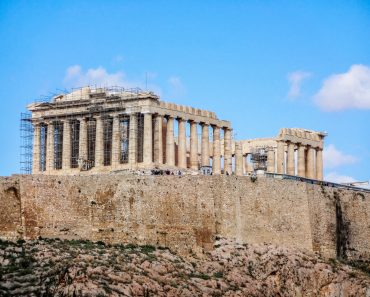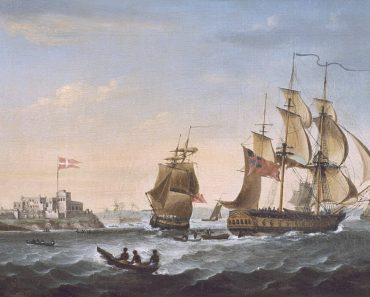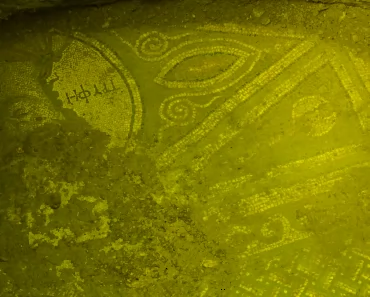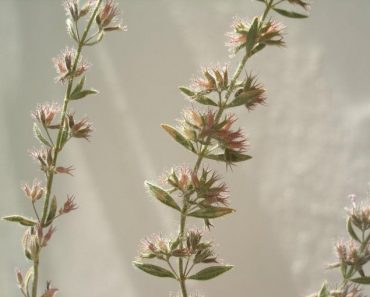In this climate of fear and paranoia, most academic research ground to a halt, but emergency archaeological work was allowed to continue. The Institute of Archaeology of the Beijing Academy of Sciences was called in and immediately put together a team to investigate. They soon established that the tomb was indeed an ancient burial chamber. Excitement mounted when they discovered a second tomb a short distance away from the first.
Art and Propaganda

The jade suit of Liu Sheng, displayed in Europe in 1973.
ALAMY/ACI
THE MANCHENG TOMBS became the poster child of Chinese archaeology. The grave goods formed the core of an exhibit organized for the reopening of the Palace Museum in Beijing in July 1971. The museum was inside the Forbidden City, formerly closed to the public because of the Cultural Revolution. The Liu Sheng jade suit was then included in an exhibit of Chinese archaeology that toured Europe in the 1970s.
The team completed their excavation that summer, and the Mancheng tombs quickly became instrumentalized as a symbol of the outstanding achievements of Chinese civilization under the Han dynasty. The discovery was also exploited by Mao’s regime to praise Chinese archaeology during the Cultural Revolution.
Mirror Images
Both tombs had the same structure: They were accessed via a narrow tunnel, which led to a large antechamber covered by a wooden structure with a tile roof. The antechamber was divided into two spaces: The room to the north contained a store of food preserved in terracotta vessels, provisions that would serve the deceased in the afterlife. The room to the south housed the stable, where the archaeologists uncovered chariots and the skeletons of horses, the ultimate symbol of elite power.

Water clock, found in the tomb of Liu Sheng at Mancheng, second century B.C. BRIDGEMAN/ACI

Golden needles, likely intended for acupuncture, were found in Liu Sheng’s tomb. Museum of Hebei Province. BRIDGEMAN/ACI
The central space formed a ceremonial hall, also with a tile roof supported by a wooden structure. In the center were two canopies surrounded by numerous objects arranged in rows: ceramic figurines representing servants, bronze vessels, lamps, and ritual weapons. To the rear of this chamber was a stone door that gave access to the funerary chamber itself. This space had a stone ceiling, and in the center sat the sarcophagus. This room and an adjoining one were seen as the private quarters of the deceased.
(Rome wanted silk, China had the goods. Here’s how the Silk Roads got their start.)







